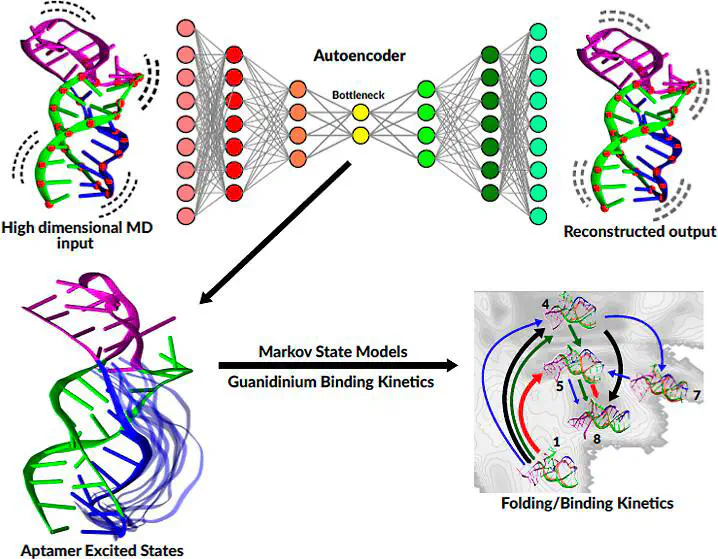Excited States of apo-Guanidine-III Riboswitch Contribute to Guanidinium Binding through Both Conformational and Induced-Fit Mechanisms
 Image credit: G. Reddy
Image credit: G. Reddy
Abstract
Riboswitches are mRNA segments that regulate gene expression through conformational changes driven by their cognate ligand binding. The ykkC motif forms a riboswitch class that selectively senses a guanidinium ion (Gdm+) and regulates the downstream expression of proteins which aid in the efflux of excess Gdm+ from the cells. The aptamer domain (AD) of the guanidine-III riboswitch forms an H-type pseudoknot with a triple helical domain that binds a Gdm+. We studied the binding of Gdm+ to the AD of the guanidine (ykkC)-III riboswitch using computer simulations to probe the specificity of the riboswitch to Gdm+ binding. We show that Gdm+ binding is a fast process occurring on the nanosecond time scale, with minimal conformational changes to the AD. Using machine learning and Markov-state models, we identified the excited conformational states of the AD, which have a high Gdm+ binding propensity, making the Gdm+ binding landscape complex exhibiting both conformational selection and induced-fit mechanisms. The proposed apo-AD excited states and their role in the ligand-sensing mechanism are amenable to experimental verification. Further, targeting these excited-state conformations in discovering new antibiotics can be explored.